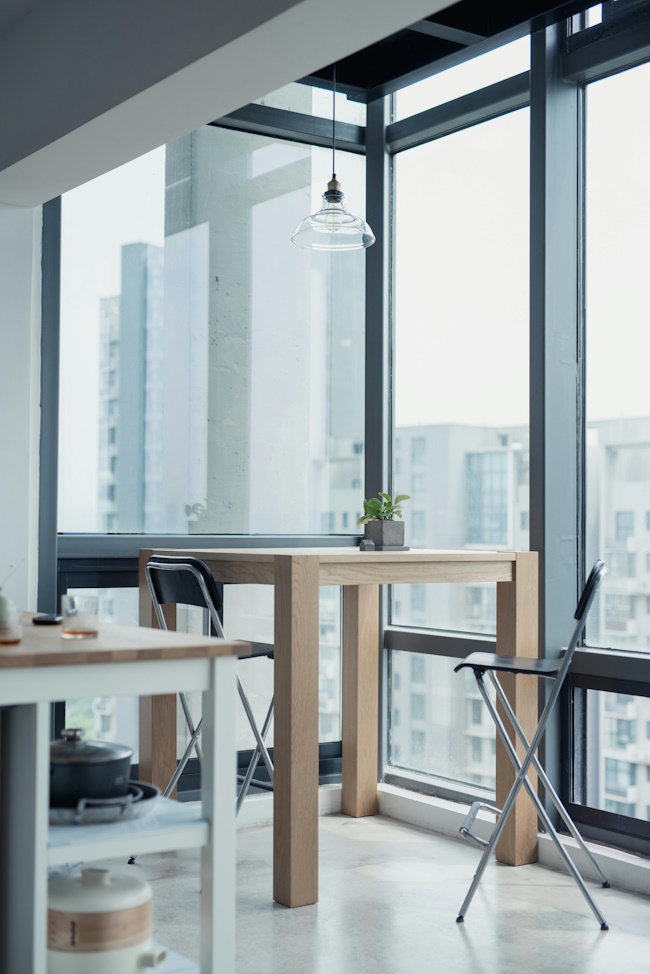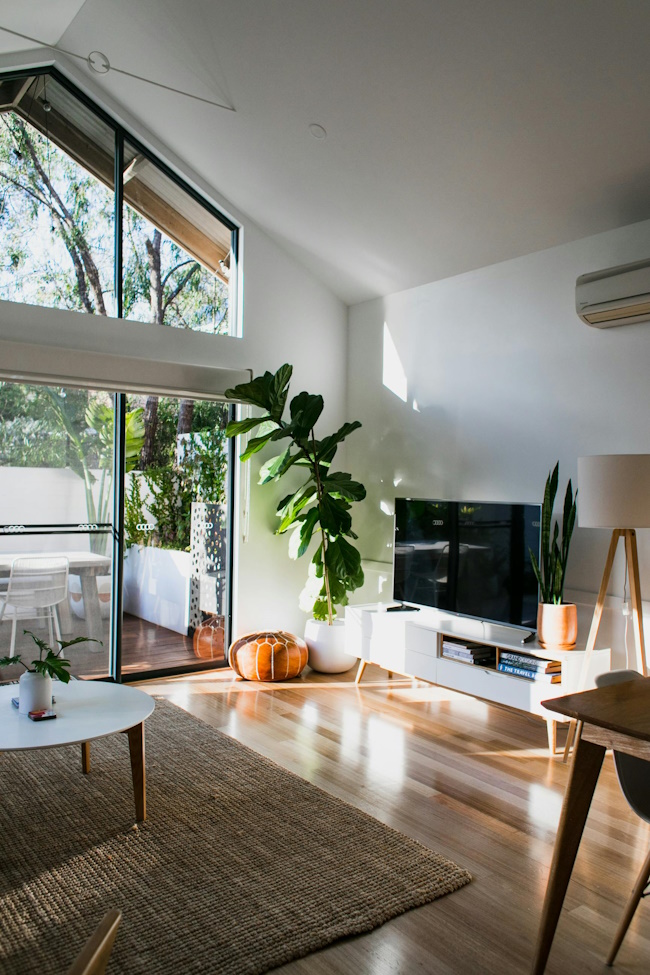For your new building project, do you envision a wall that doesn't simply end abruptly, but rather blends subtly into a continuous line, or a window frame that harmoniously complements the architectural style? Aluminum profiles realize their full potential, combining technical functionality with artistic design. They precisely direct light, create clean lines, and simultaneously exude an artfully modern aesthetic.
Aluminum a strong, lightweight, and easy-to-work material. From load-bearing structures to aesthetically pleasing, visible edges, you can rely on aluminum profiles. According to Aluminium Deutschland, the German aluminum industry generated approximately €23 billion in revenue last year (2024). This is no surprise, as the material offers numerous unique advantages.
Learn below which aluminum profiles you should use for which purpose, how to precisely plan the connection technology and cutting, and how to care for the material. This will transform a simple building element into a true design feature for timeless, artistic interiors and facades.
When you choose aluminum, form meets function.

Image source: Pexels
If you want to add subtle details and highlights to your interiors while maintaining clean lines, aluminum profiles are an excellent choice. Their low weight (aluminum's density is approximately 2.7 g/cm³ according to NIST/ASM) allows for the use of very slim profiles. Unlike steel, which weighs almost three times as much, this allows you to create more space for light and achieve a more modern look. Aluminum doesn't rust, can be formed into a wide variety of shapes, and integrates seamlessly into almost any environment.
Do you value sustainability? According to the International Aluminium Institute, recycled aluminium saves an average of approximately 95% energy compared to producing it from scratch. Around 75% of the world's aluminium profiles are still used today as window frames, angle profiles, or structural profiles. Thus, aluminium is not only a highly practical material, but also a clear statement in favor of conscious, durable, and efficient architecture.
According to European Aluminium, EU aluminium production generates an average of approximately 6.8 kg of CO₂ per kilogram. If you want to demonstrate the sustainability of your project, it is important to consider the CO₂ emissions from aluminium production.
Types of aluminum profiles and their areas of application
Aluminum profiles come in many different shapes. Each one is designed for a specific application. Learn all about the most common types:
L-profiles
L-profiles, also known as angle profiles, are used as edge protection, finishing strips, or connecting profiles. In interior construction, they are used on stairs and tiles. Here you will find equal and unequal leg versions.
T-profiles
T-profiles are used as connecting and supporting profiles and are versatile. They can frame surfaces, support components, and provide a clean finish. Their vertical sides make them suitable for both interior construction and structural solutions in exterior applications.
H-profiles
The typical H-profile is designed to join two surfaces or panels together. It is frequently used in drywall construction, conservatories, or window elements. The double webs increase its strength.
U-profiles
U-profiles offer outstanding stability at a low weight due to their open design. They are used as covers, guide rails, or channels and are regularly employed in balcony and terrace construction.
Z-profiles
Z-profiles (double angles) are characterized by their diagonal shape, which enables a very stable connection with minimal material usage. They are particularly lightweight, offer enormous load-bearing capacity, and are used in furniture manufacturing and landscaping.
Flat bars
Flat bars are simple, flat strips made of aluminum that can be used in a variety of ways. For example, as decorative trim, transition strips, or connecting elements. Height differences can be discreetly compensated for by using flat bars.
Construction profiles
A structural profile (T-slot profile) is provided with grooves into which connecting elements can be inserted. Structures using such profiles can be easily extended and modified using T-nuts, eliminating the need for welding entirely.
Round tubes and square tubes
These closed, hollow aluminum profiles are both strong and lightweight. Square tubes are perfect for roofs and frames. Round tubes are used for railings, furniture making, or cable management.
Special profiles
If standard shapes don't fit, custom-made special profiles are used. These are mostly required for special requirements in the fields of architecture , mechanical engineering, or automotive engineering.

Image source: Pexels
Create clean lines for your terrace or balcony with an aluminum substructure.
An aluminum substructure retains its shape over the long term, warps minimally, and is resistant to rot. Hollow chambers facilitate drainage, and concealed clips allow you to neatly fasten the decking boards made of your chosen material. This results in an attractive surface with clean, defined joint lines. For railings and balustrades, you can use hollow chamber profiles with anodized or powder-coated finishes.
Do you live near the coast? Then make sure you use the appropriate separating layers and fasteners to prevent contact corrosion. Aluminum has a natural oxide layer that protects the material. According to official information from Alumeco, corrosion protection is based on this dense, self-healing layer. Anodizing and powder coating are the standard in architecture when color and gloss level are part of the design.
Aluminum profiles create light and rhythm in interior design.
Aluminum profiles are used in interior design wherever precision is required. For example, atmospheric LED light lines can be guided and simultaneously cooled using aluminum profiles. This extends the lifespan of the LEDs and results in uniform illumination. The use of angle profiles protects the edges without compromising the overall appearance.
T-slot construction profiles offer flexibility for modular furniture and exhibition stand construction. The individual components are screwed together using T-nuts, and frames are built in a clear grid system. If needed, the individual components can therefore be easily reconfigured without leaving any trace.

Image source: Pexels
Ensure optimal insulation with a slim appearance by installing aluminum frames.
Thermally broken aluminum frames allow you to combine energy efficiency, structural integrity, and design. A polyamide web (PA66 GF) between the inner and outer layers of this frame significantly reduces heat conduction. Even with large glass surfaces, it's possible to use narrow profiles with excellent U-values. The U-value (W/(mK)) is the key indicator of a building's energy efficiency. In the construction industry, it's used to evaluate thermal insulation measures.
According to Technoform, insulating strips made of polyamide reduce heat conduction in aluminum frames. Product Environmental Product Declarations (EPDs) from the industry indicate a service life of approximately 50 years for aluminum windows under normal conditions.
Create visible precision through exact planning from cutting to assembly.
The best results are achieved through clean assembly. Cutting, joining techniques, and corrosion protection should all be considered as part of the design.
- Cutting: Cut the elements to size using a fine-toothed aluminum saw blade and a guide. Don't forget to deburr after cutting. This way, the transitions can be closed almost seamlessly.
- Connection technology: Utilize T-nuts, concealed corner and click connectors, bolts, and clamps. These enable detachable, service-friendly, and in most cases, invisible connections. For facades, tested system connectors with pressure strips and sealing profiles are used. They bear the loads and ensure a tight seal without affecting the appearance.
- Protection and surface finish: In normal environments, anodizing or powder coatings are sufficient. If you live in a coastal area, add separating layers and fasteners. This will help prevent contact corrosion.
Aluminum profiles offer numerous advantages for your construction project.
Aluminum profiles offer you a combination of design freedom, durability, light weight, and sustainability. Choose the appropriate shape and alloy, carefully plan the cutting and the suitable joining technology, and check EPDs, U-values, and surface finishes early on. This way, you can create interiors and facades that appear serene, are technically sound, and will last for years to come.

Owner and Managing Director of Kunstplaza. Journalist, editor, and passionate blogger in the field of art, design, and creativity since 2011. Successful completion of a degree in web design as part of a university study (2008). Further development of creativity techniques through courses in free drawing, expressive painting, and theatre/acting. Profound knowledge of the art market through years of journalistic research and numerous collaborations with actors/institutions from art and culture.

















